Basic Savory Shortcrust Pastry Recipe for Your Savory Pies

Savory Shortcrust Pastry is a quick and very tasty preparation, perfect to use in the kitchen as a base for savory pies, boats, crumbles and cream tarts. The procedure is very similar to that of the classic sweet shortcrust pastry but, in this case, the granulated sugar is omitted and the butter is replaced with seed oil.
To make it at home, you just need to mix the eggs with the flour, oil, a pinch of salt, a drop of water and a pinch of baking powder: this will make the dough more crumbly. Once you have obtained a smooth and homogeneous dough, all you have to do is roll it out with a rolling pin, without waiting for further resting times, and thus give life to the most varied recipes. With the indicated doses you will obtain two discs of dough of about 10-11 inches in diameter but, of course, you can increase or decrease the quantities according to personal needs.
What is Savory Shortcrust Pastry?
Shortcrust pastry, known as "pasta frolla" in Italy, has a rich history that intertwines with the evolution of baking and pastry-making across Europe. Its origins can be traced back to medieval times when early forms of pastry were developed to encase and preserve various fillings. Initially, these pastries were utilitarian, serving as containers for meats and other ingredients during baking. Over time, the recipes evolved, and by the Renaissance, more refined versions of shortcrust pastry began to emerge, incorporating ingredients like butter and sugar to enhance flavor and texture. In Italy, pasta frolla became a foundational element in both sweet and savory dishes, with regional variations showcasing local tastes and ingredients.
Pro Tips for The Best Savory Shortcrust Pastry
- Mix the ingredients just until combined. Overworking develops gluten, making the pastry tough instead of tender.
- Use all-purpose flour for a balanced structure. If you desire a crumblier texture, you can mix in a small amount of whole wheat or pastry flour.
- Roll out the dough evenly to about 3-4 mm thickness. Uneven thickness can lead to uneven baking, with some areas overcooked and others underdone.
- If using the pastry for quiches or tarts, consider blind baking. Line the dough with parchment paper, fill it with baking beans or rice, and pre-bake for a few minutes to avoid a soggy bottom.
What's The Difference Between Sweet and Savory Shortcrust Pastry?
Sweet shortcrust pastry includes sugar for a subtle sweetness and is often flavored with vanilla or lemon zest, making it ideal for desserts like tarts, pies, and cookies. In contrast, savory shortcrust pastry omits sugar and may include salt, herbs, or spices for a more neutral or savory flavor, making it perfect for dishes like quiches, savory pies, and tarts. Despite these differences, both types share a similar base of flour, butter, and eggs, tailored to complement their respective culinary roles.
Is Savory Shortcrust Pastry the Same as Pie Dough?
Savory shortcrust pastry and pie dough are similar but not identical. Both use flour, butter, and water as primary ingredients, but pie dough typically has a higher fat content and uses minimal to no egg, resulting in a flakier, more tender crust. In contrast, savory shortcrust pastry often includes egg, making it sturdier and crumblier, ideal for holding fillings like quiches or savory tarts. While both can be used for savory dishes, pie dough is flakier, whereas shortcrust pastry offers a more crumbly, biscuit-like texture.
Can I Add Anything Else to The Basic Pastry?
Of course! For a more fragrant result, you can add to the rest of the ingredients a mix of aromatic herbs of your choice, such as chopped thyme, dried oregano or chopped rosemary needles, while for a more flavorful result, you can incorporate a couple of spoons of grated pecorino or parmesan.
Some Common Troubleshooting
Here are some common troubleshooting issues and solutions when working with savory shortcrust pastry:
- Dough Cracking: Cause: The dough is too cold or dry.
Solution: Allow the dough to rest at room temperature for a few minutes before rolling. If it's still dry, add a teaspoon of cold water and gently knead. - Shrinking During Baking: Cause: Overworked dough or insufficient chilling time. Solution: Avoid over-kneading and let the dough rest in the fridge for at least 30 minutes before rolling and again before baking.
- Pastry Too Tough: Cause: Overmixing or too much gluten development. Solution: Mix just until the ingredients come together and avoid overhandling the dough.
- Dough Too Sticky: Cause: Butter melting or excess moisture. Solution: Chill the dough longer and use lightly floured surfaces when rolling.
- Pastry Too Crumbly: Cause: Not enough binding agents like egg or too much fat. Solution: Add a small amount of cold water or an extra egg yolk to bring the dough together.
Savory Shortcrust Pastry Filling Ideas
Once the dough is ready and rolled out inside a cake tin with a removable bottom, you can stuff it with a variety of fillings: ham and smoked provola, ricotta and spinach, mushrooms, pumpkin and sausage, radicchio, taleggio and walnut kernels… Or you can make mini tartlets, to be cooked in the oven and then filled with a creamy spreadable cheese and smoked salmon rosettes.
Can I Make This Ahead of Time?
Yes, you can. The dough can be prepared up to 2-3 days in advance and stored tightly wrapped in plastic wrap in the refrigerator. Chilling the dough not only saves time but also helps it rest, resulting in a flakier, more tender pastry when baked.
Does Savory Shortcrust Pastry Freeze Well?
Indeed! You can freeze the dough either as a whole ball or rolled out in a pie tin, tightly wrapped in plastic wrap and a freezer-safe bag, for up to 3 months. When ready to use, thaw it overnight in the refrigerator before baking. Freezing helps preserve the dough's texture and flavor, making it a convenient make-ahead option.
How to Store Savory Shortcrust Pastry
Savory shortcrust pastry can be stored in the fridge, wrapped in cling film, for up to 1 day.
Ingredients
How to Make Savory Shortcrust Pastry
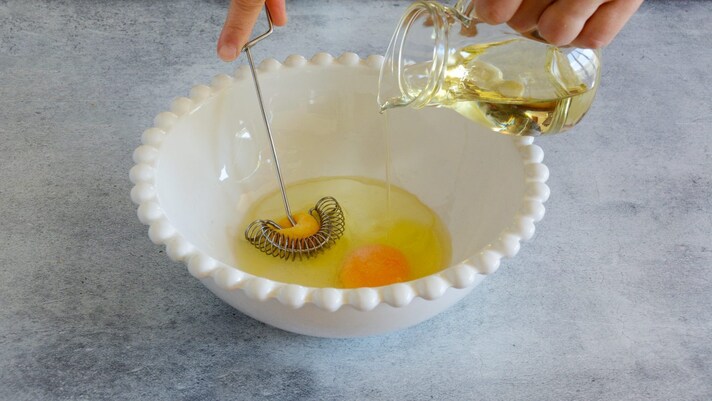
Break the eggs into a large bowl, slowly pour in the sunflower seed oil and start mixing with a whisk.
Break the eggs into a large bowl, slowly pour in the sunflower seed oil and start mixing with a whisk.
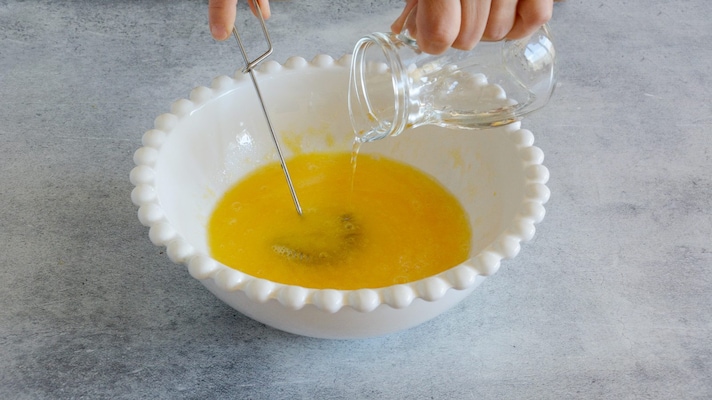
Add the water too and the salt, always continuing to mix.
Add the water too and the salt, always continuing to mix.
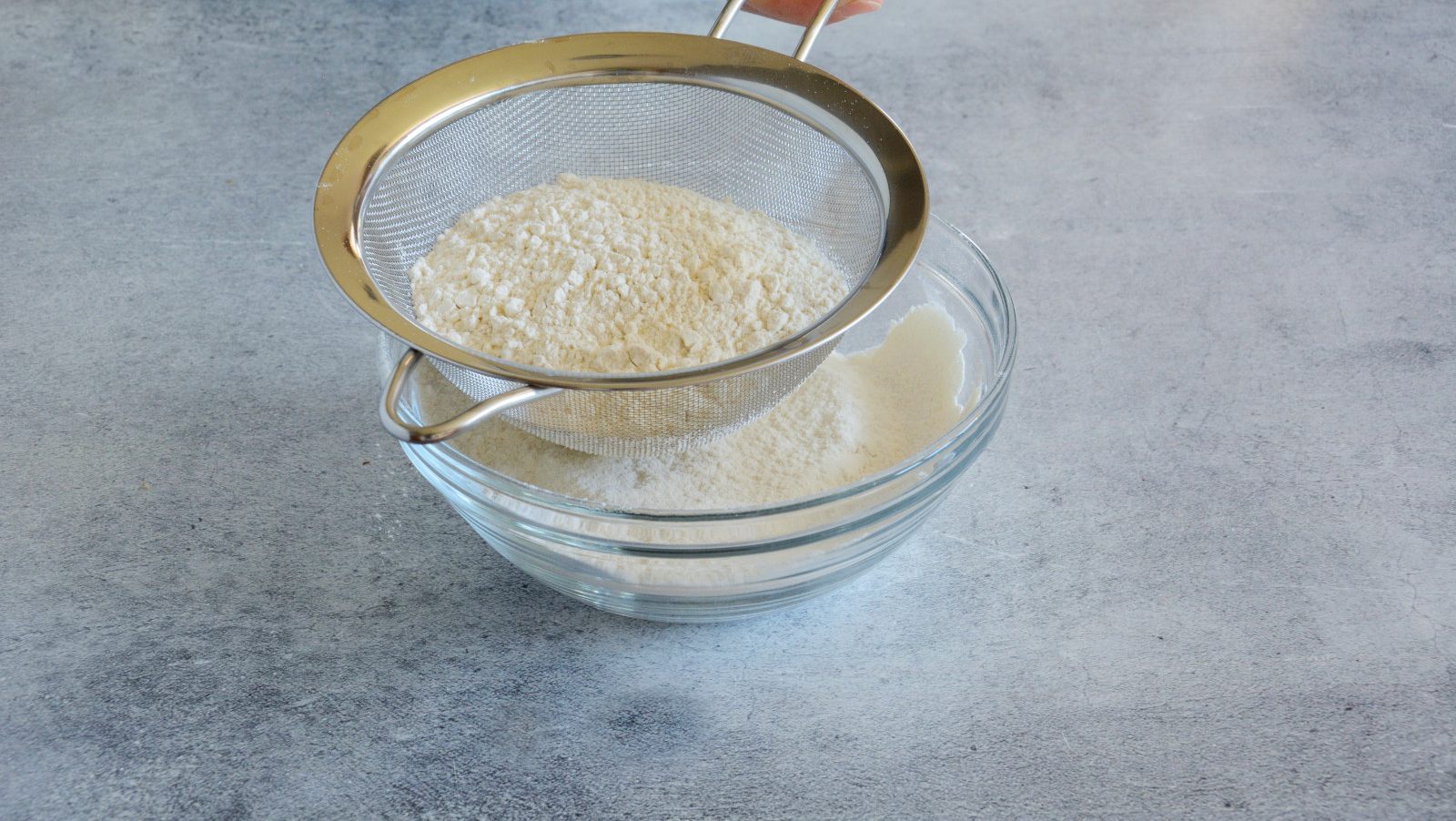;Resize,width=712;)
In a separate bowl, sift the flour with the yeast.
In a separate bowl, sift the flour with the yeast.
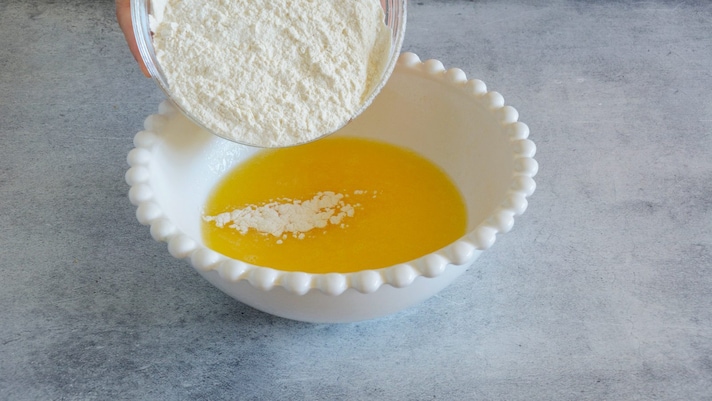
Gradually add the yeast and flour mixture to the egg mixture.
Gradually add the yeast and flour mixture to the egg mixture.
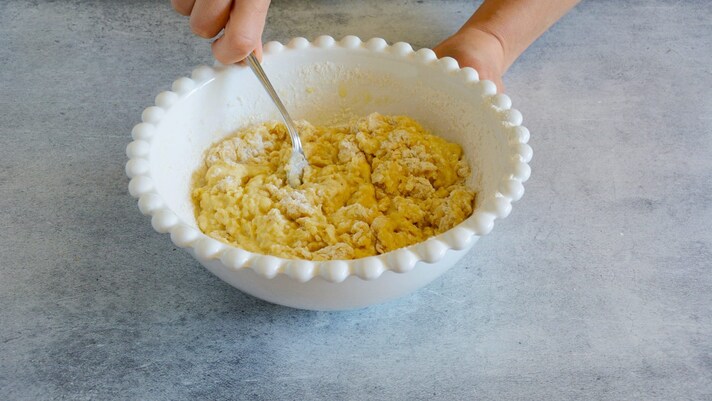
Incorporate the powders with the prongs of a fork.
Incorporate the powders with the prongs of a fork.
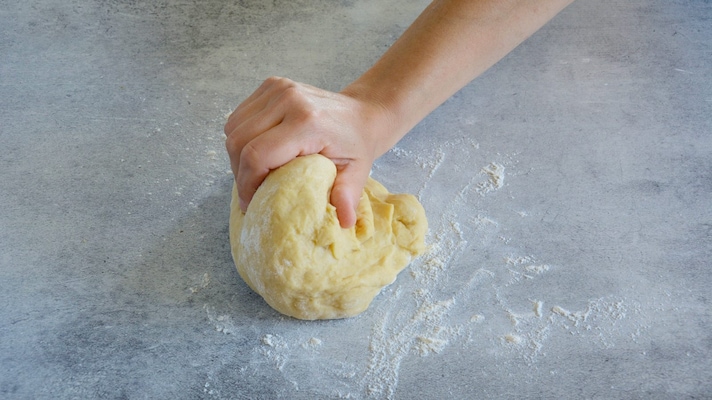
Then transfer the dough onto a lightly floured work surface and continue to work it with your hands for a few minutes.
Then transfer the dough onto a lightly floured work surface and continue to work it with your hands for a few minutes.
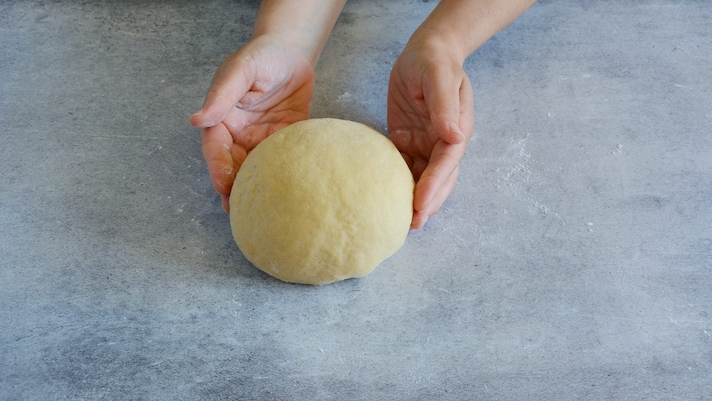
At the end you should obtain a smooth and homogeneous dough.
At the end you should obtain a smooth and homogeneous dough.
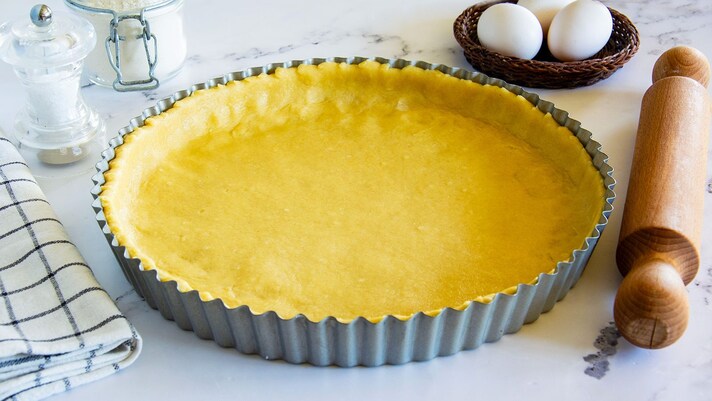
Roll out the savory shortcrust pastry into a thin disc about 3-4 mm thick and use this to line a 10-11 inches diameter fluted cake tin; then fill the pastry with your favorite ingredients and cook everything in a hot oven until golden. Alternatively, use the shortcrust pastry to make tartlets and savory biscuits. Enjoy!
Roll out the savory shortcrust pastry into a thin disc about 3-4 mm thick and use this to line a 10-11 inches diameter fluted cake tin; then fill the pastry with your favorite ingredients and cook everything in a hot oven until golden. Alternatively, use the shortcrust pastry to make tartlets and savory biscuits. Enjoy!
;Resize,width=767;)
;Resize,width=712;)

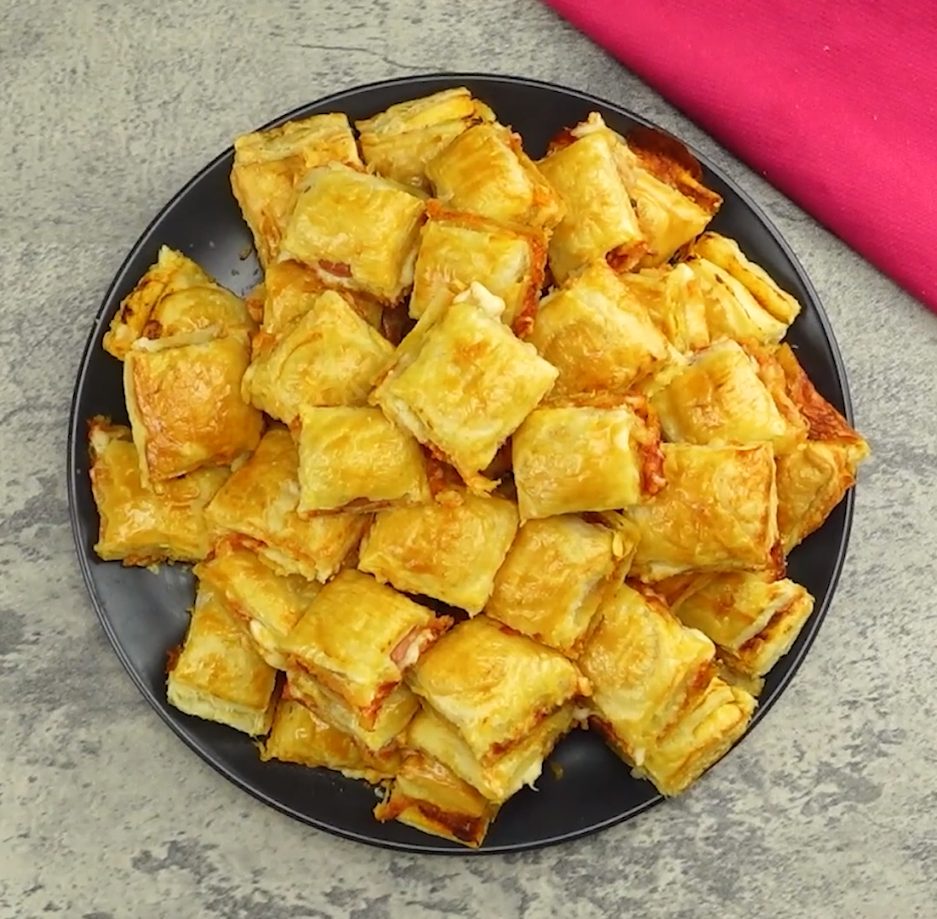;Resize,width=712;)
